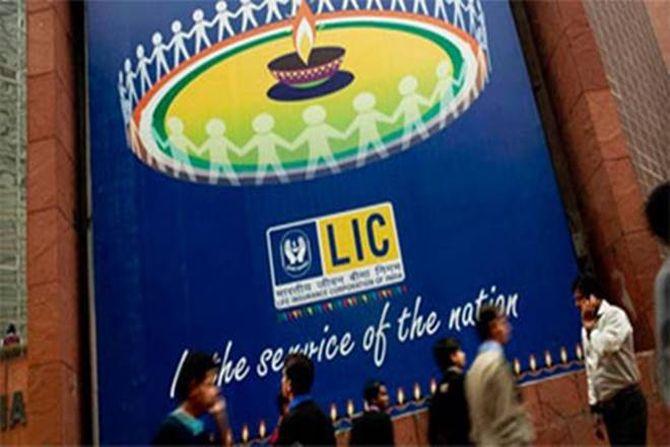 | « Back to article | Print this article |
This is despite the private sector companies outperforming their public sector counterparts, reports Sachin P Mampatta.

The private sector has a lower share in the portfolio of Life Insurance Corporation of India now than at any point since 2003.
It accounts for 14.9 per cent of the total investments, according to numbers analysed from the Reserve Bank of India’s Handbook of Statistics on the Indian Economy.
The LIC has been reportedly helped by a number of public sector divestments, as well as banks such as IDBI, which may have resulted in a shrinking pool available to the private sector. This is despite the private sector companies outperforming their public sector counterparts.
The BSE PSU index has declined 4.9 per cent in 2019 so far. The Sensex, which is a broad index representative of the country’s largest companies including large private sector ones, has risen 8.4 per cent. In fact, the PSU index has underperformed the benchmark Sensex in 11 out of the last 16 years.
The private sector share had last slipped below 15 per cent in 2003, when it was 11.68 per cent. It peaked for the subsequent period in 2010 at 25.72 per cent. It has since fallen for nine years in a row, to reach its present level.
Meanwhile, the public sector’s share in total investments stands at its third-highest level since liberalisation. The 85.07 per cent share in 2019 is higher than any year except 2002 (87.15 per cent) and 2003 (87.22 per cent).
The numbers don’t add up to exactly 100 per cent, given that there are investments in the joint and co-operative sectors included.
The two account for Rs 1,098 crore in total. The overall investment in LIC stands at Rs 26.61 trillion. Of this, Rs 26.4 trillion is invested in stock exchange securities. It also has a loan book of Rs 24,909 crore. A look at the last available annual report shows the life insurer has a majority of its investments in government securities.
“In respect of non-linked business, corporation earned Rs 1,55,071.90 crore as interest and Rs 9,768.82 crore as dividend, returning a yield of 7.71 per cent for the year. The corporation also earned rent of Rs 455.98 crore on investment property, Rs 9,576.81 crore by way of interest on policy loans, and Rs 20.97 crore as interest on loan on mortgages. A further Rs 19,512.94 crore was realised as net profit from the sale of equities, government securities and other securities (including amortisation) taking the total yield to 8.66 per cent,” according to the FY18 annual report.
“Typically, LIC has supported the divestment programme of the government from time-to-time, and in a bigger way since 2014. The investments by LIC do not seem to be driven solely with the target of efficient allocation of capital. It has also been looking at social objectives. With more stake sales on the anvil, unless the government looks at pure strategic divestment, one might well see the private sector’s share in LIC’s investment falling further,” said Deepak Jasani, head of retail research at HDFC Securities.
The size and parentage of LIC may mean there is little impact for policyholders, according to Swapnil Pawar, founder of financial services firm Asqi Advisors.
“Most of the investors go in with an implicit assumption that LIC itself can’t possibly fail,” he added.
Photograph: PTI Photo.